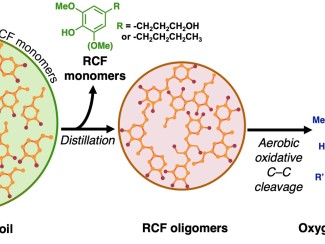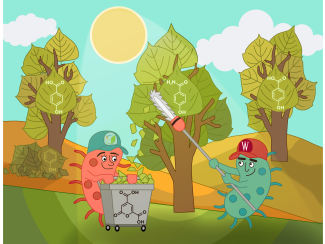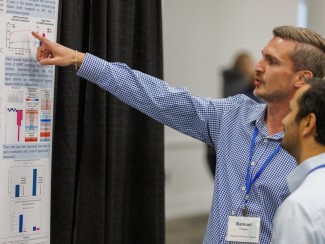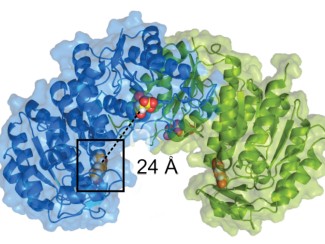Switchgrass hydrolysate triggers complex stress response in Zymomonas mobilis

The Science
Converting biomass from non-food plants into biofuels and other products requires microbes that are both efficient and able to tolerate the stress of industrial fermentation.
Zymomonas mobilis is a promising bioenergy microbe that can tolerate a broad range of conditions, naturally produces a lot of ethanol, and can be easily modified to produce other types of alcohol and products, such as isobutanol and isoprenoids. But Z. mobilis can’t digest raw biomass, so chemical treatments are required to release sugars that it can ferment. Those treatments often introduce toxic byproducts that slow the microbe’s growth and fermentation rate.
Despite growing interest in Z. mobilis for bioenergy production, scientists have limited understanding of how this treated biomass solution (known as hydrolysate) affects it. So scientists with the Great Lakes Bioenergy Research Center used a systems-level approach to study the microbe’s response to hydrolysate produced from switchgrass treated with a process called ammonia fiber expansion (AFEX). The findings revealed that the hydrolysate triggers a complex stress response, causing changes in the membrane that controls what enters and exits the cell as well as how the microbe digests carbon in the plant sugars.
The Impact
Non-food plant fibers — such as trees, grasses, and crop residues — represent a renewable, home-grown source of fuels and chemicals grown on land unsuitable for growing food crops. These insights can inform efforts to engineer new strains of Z. mobilis that are more resistant to toxic byproducts and are better at converting biomass into fuel and products.
Summary
Researchers grew Z. mobilis in varying concentrations of AFEX-treated switchgrass hydrolysate (0%, 25%, 50%, and 100%) and used lipidomics, proteomics, and microscopy to analyze the physiological response.
The microbes maintained robust growth in hydrolysate. However, hydrolysate exposure induced substantial changes in lipid membrane composition and proteome expression, revealing a broad stress response characterized by the upregulation of heat shock proteins and efflux transporters and the downregulation of cell motility proteins. Unexpectedly, hydrolysate exposure also led to a robust upregulation of the Entner–Doudoroff pathway, the ethanol fermentation pathway, and other central carbon metabolism enzymes, indicating a substantial cellular investment potentially driven by additional nutrient availability in hydrolysate.
While there is partial overlap with responses to ethanol and isobutanol exposure, hydrolysate elicits a distinct set of metabolic and regulatory changes, most notably the strong upregulation of central carbon metabolism enzymes.





